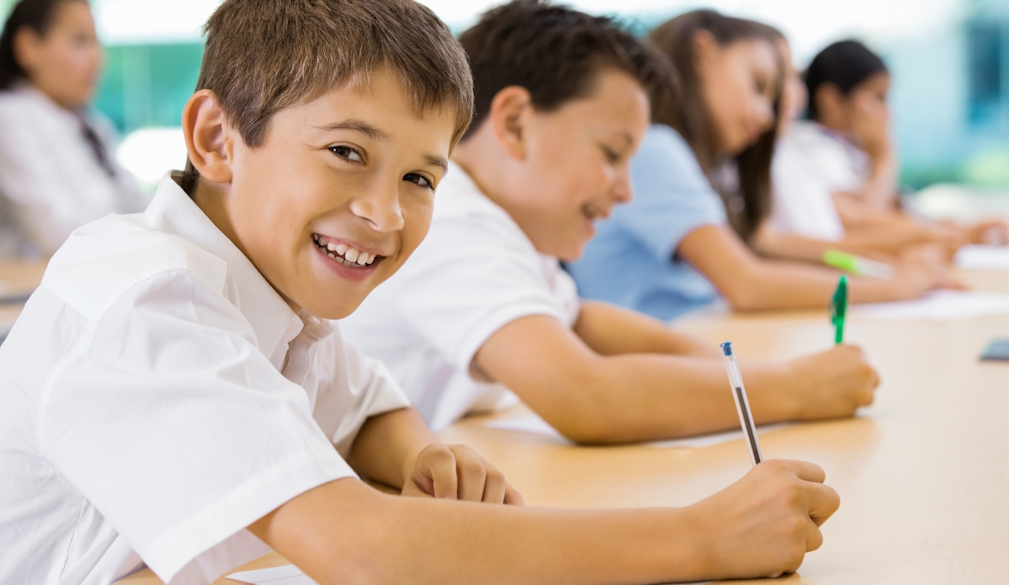NSW has finally struck a school funding deal. What does this mean for schools and students?
- Written by Stewart Riddle, Professor, School of Education, University of Southern Queensland

The federal government and NSW government have announced a new funding deal[1] for the state’s public schools.
This will see the Commonwealth contribution jump from 20% to 25% of the schooling resource standard[2] (on which school funding is based) by 2034. The NSW government will contribute the rest.
This follows more than a year of negotiations[3] between federal Labor and the states and territories to lock in a new agreement, after the previous one expired at the end of 2024. Queensland is now the only state or territory without an agreement.
Th NSW deal will result in an additional A$4.8 billion in federal funding to NSW public schools over ten years. But the extra funding comes with conditions.
As Prime Minister Anthony Albanese says,
This is not a blank cheque; [it] ties funding to reforms that will help students catch up, keep up and finish school.
Why has this taken so long?
The first state to sign on was Western Australia in January[4] last year, but many other states have taken longer to agree[5].
Some, like NSW pushed for a 5% funding increase[6], when the Albanese government was initially only offering a 2.5% boost.
The federal government finally agreed to a 5% increase for South Australia and Victoria in January, in a sign the school “funding wars[7]” were about to see some peace.
Read more: Schools agreement provides NSW $4.8 billion extra for public schools over a decade[8]
What’s in the new agreement?
The new funding is part of the Better and and Fairer Schools Agreement[9]. Under this agreement, states and territories must agree to specific education reforms to qualify for the federal funding. These include:
-
Year 1 phonics and early years numeracy checks
-
an emphasis on “explicit teaching[10]” (where teachers show students what to do and how to do it)
-
providing intensive support for students
-
support for student and teacher wellbeing
-
improving teacher recruitment and retention.
The specific actions required by each state and territory are outlined in their bilateral agreements with the federal government.
The new money will take time to arrive
The federal and NSW governments have billed their deal as a means to “fully and fairly fund New South Wales public schools”. Or, as Education Minister Jason Clare noted, “this is big”.
But while the extra funding is welcome news for NSW public schools, the results of the agreed reforms will not be felt for some time. Underfunded schools will continue to be underfunded for years to come.
This is because the extra funding will gradually kick in from 2026 to 2034. So many students who currently attend underfunded public schools will not see the benefits of the increased funding during their time at school.
Keep in mind, talk of “fully funding” schools dates back to David Gonski’s 2011 report[11], which called for equitable funding[12] for Australia’s education system.
Read more: How a Cold War satellite and Robert Menzies changed the way Australian schools are funded[13]
What about the reforms?
The federal government is placing considerable emphasis on its bid to lift wellbeing, teaching and learning standards as part of the new agreement. But the last agreement with states made little difference to schools.
The National School Reform Agreement[14] (which expired at the end of 2024) aimed to improved academic outcomes, especially for children from disadvantaged backgrounds and improve school attendance. But there were few positive gains around its goals.
In 2022, a scathing Productivity Commission’s review[15] of the agreement found:
The [reform agreement’s] initiatives have done little, so far, to improve student outcomes.
The new bilateral agreements contain more specific targets for each state and territory. However, this does not mean promises will be kept. Our 2024 research has shown[16] how various education ministers make national schooling reform promises, which are then lost as the political cycle moves on.
once agreements are endorsed and ratified, the ongoing commitment to the enactment of agreed education reforms can be ‘forgotten’.
Our research has also shown how school reform also becomes stuck[17] in the process of moving between national, state and school levels. That is, the policy intention (or reform agreement) rarely plays out the way it is intended in schools.
What now?
Does this mean the new agreement will also fail to produce “better and fairer” outcomes for some of Australia’s most marginalised and disenfranchised students?
We need to be careful that real schooling reform – of which fair and full funding to every Australian schools is an important element – is not lost to the short-term political games of the election cycle.
While the Coalition has been critical of the time taken to reach an agreement, it says it will honour[18] the funding commitments if elected.
So assuming Queensland signs onto the new agreement before the federal election, perhaps the promise of the original Gonski reforms will finally be realised, even if it is two decades later.
References
- ^ have announced a new funding deal (theconversation.com)
- ^ schooling resource standard (www.education.gov.au)
- ^ more than a year of negotiations (www.abc.net.au)
- ^ Western Australia in January (theconversation.com)
- ^ taken longer to agree (theconversation.com)
- ^ pushed for a 5% funding increase (www.theguardian.com)
- ^ funding wars (theconversation.com)
- ^ Schools agreement provides NSW $4.8 billion extra for public schools over a decade (theconversation.com)
- ^ Better and and Fairer Schools Agreement (www.education.gov.au)
- ^ explicit teaching (education.nsw.gov.au)
- ^ 2011 report (www.education.gov.au)
- ^ equitable funding (www.theguardian.com)
- ^ How a Cold War satellite and Robert Menzies changed the way Australian schools are funded (theconversation.com)
- ^ National School Reform Agreement (www.education.gov.au)
- ^ Productivity Commission’s review (www.pc.gov.au)
- ^ has shown (www.tandfonline.com)
- ^ becomes stuck (www.tandfonline.com)
- ^ says it will honour (www.abc.net.au)




















